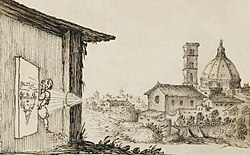Daguerreotype

A Daguerreotype is a method of creating photographs that is no longer in general use. A man called Louis-Jacques-Mandé Daguerre invented the daguerreotype process in France in 1839.
The new type of photography became very popular very quickly as it was capable of capturing a "truthful likeness." The process produced very high quality images, even by today's standards, but the image had to be viewed at a specific angle to be seen correctly. By 1850, there were over seventy daguerreotype studios in New York alone.
However the popularity of the daguerreotype was short lived as other cheaper processes were invented. By the late 1850s faster and less expensive processes such as the ambrotype, became available. A drawback of the Daguerreotype was that there was no negative from which to produce lots of images. Each picture was therefore unique, the only way to get a copy was to rephotograph the image.
Daguerreotype Media
Daguerreotype of Louis Daguerre in 1844 by Jean-Baptiste Sabatier-Blot
The first authenticated image of Abraham Lincoln, taken soon after his election to Congress in 1846, attributed to Nicholas H. Shepard
19th-century printed reproduction of a still life believed to be a c. 1832 Niépce physautotype (glass original accidentally destroyed c. 1900)
Daguerreotype camera built by La Maison Susse Frères in 1839, with a lens by Charles Chevalier
Daguerreotype possibly made in 1837 by Daguerre. The subject is believed to be Constant Huet, who worked at the Natural History Museum, where Daguerre took pictures in 1837. If correct, this would be the oldest surviving portrait photograph of a person.
1840–1841 camerae obscurae and plates for daguerreotype called "Grand Photographe" produced by Charles Chevalier (Musée des Arts et Métiers)
| Wikimedia Commons has media related to Lua error in Module:Commons_link at line 62: attempt to index field 'wikibase' (a nil value).. |








